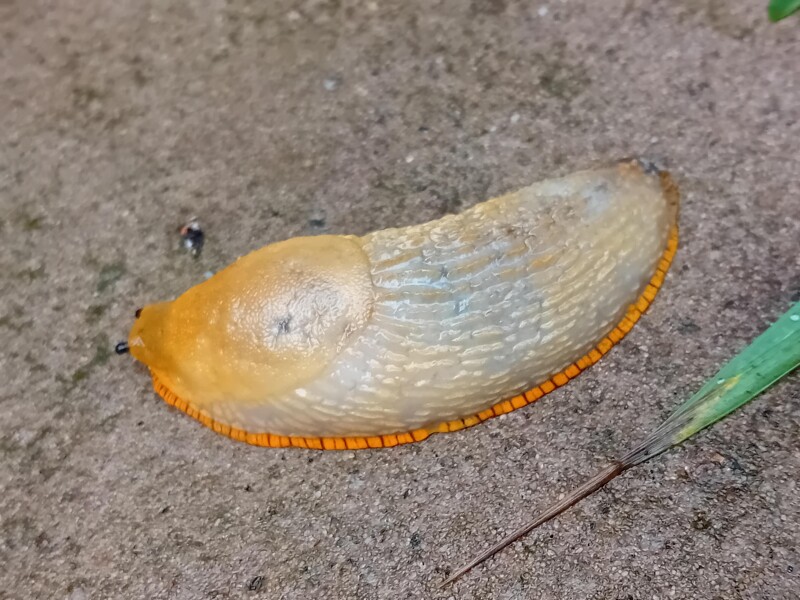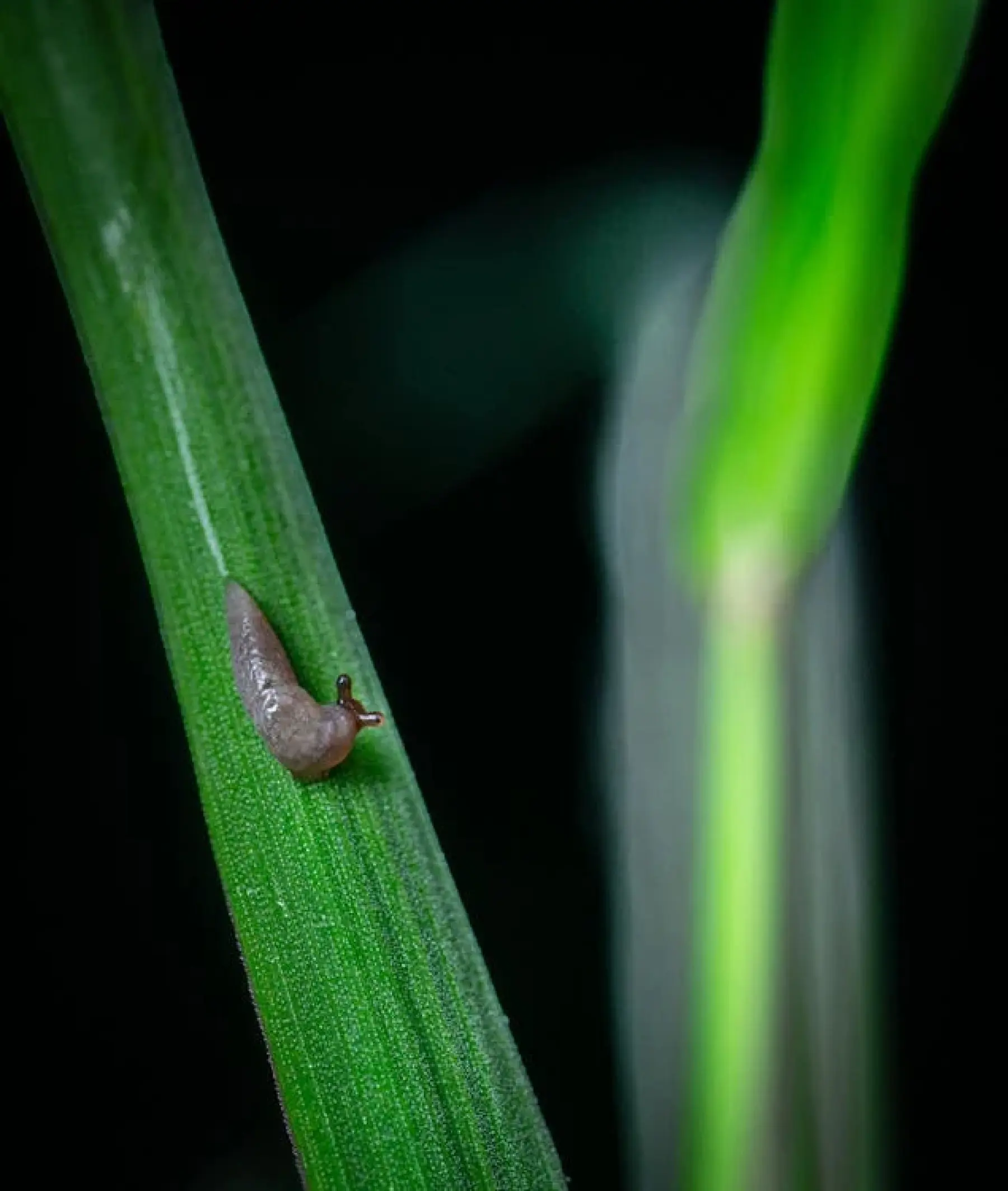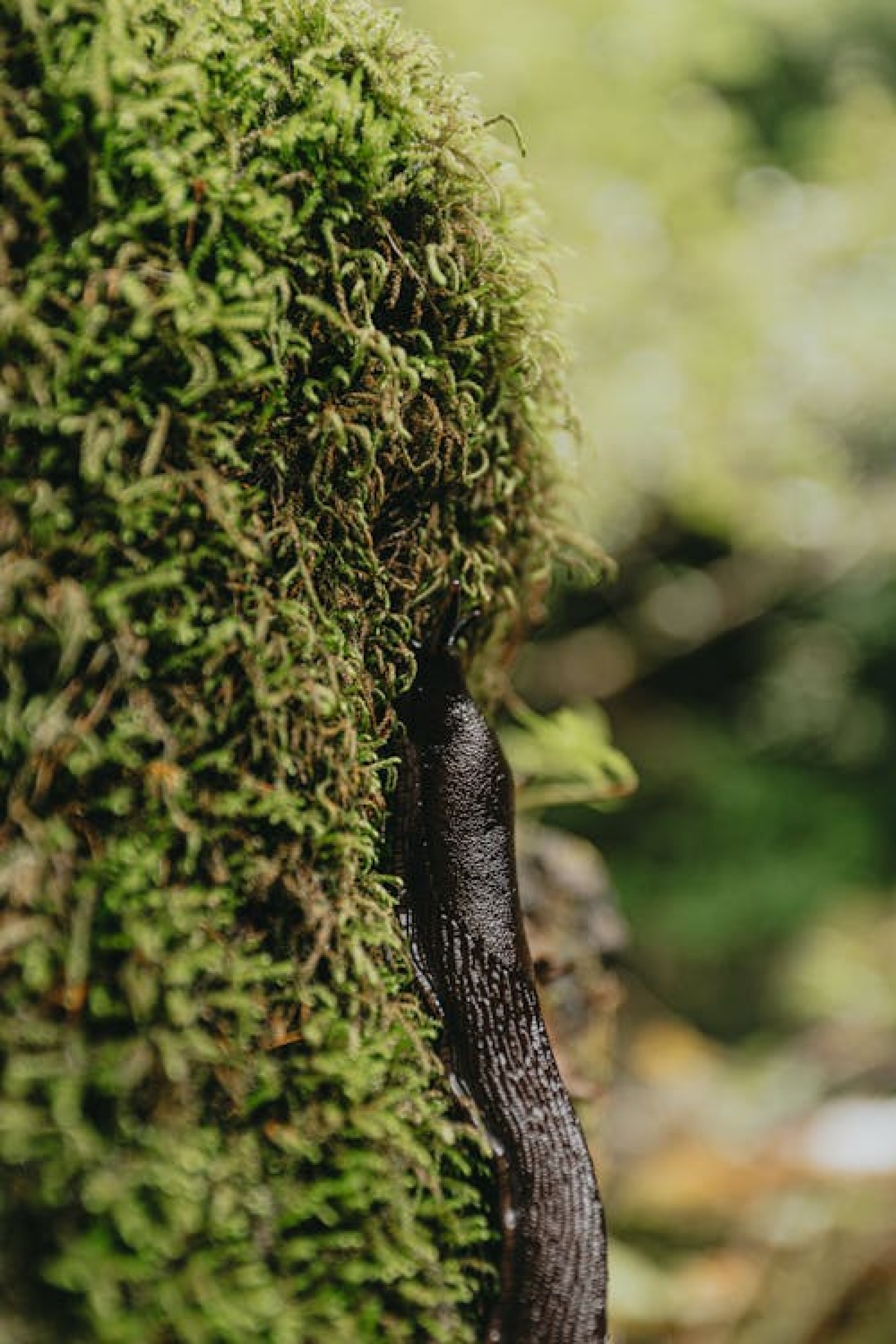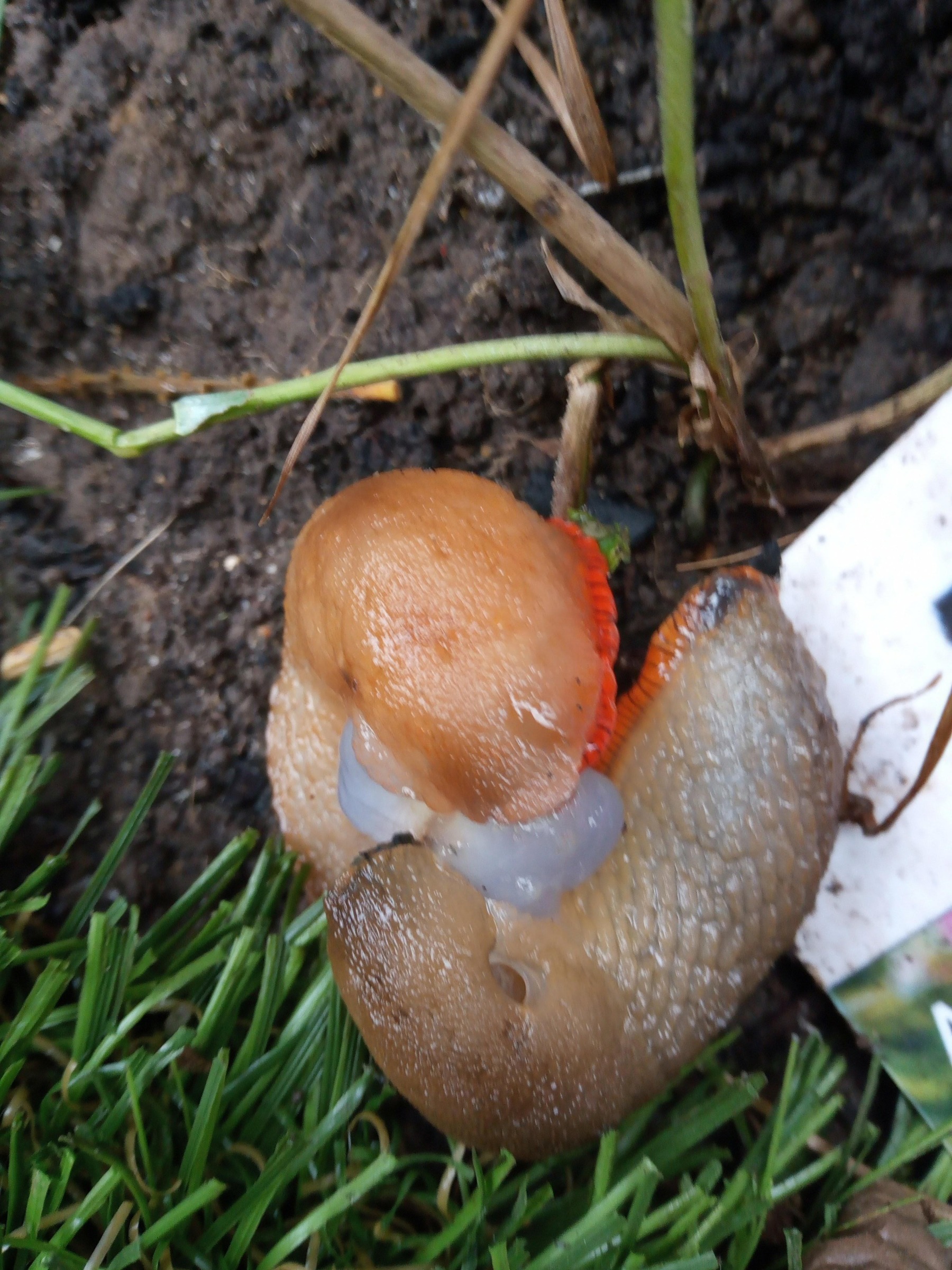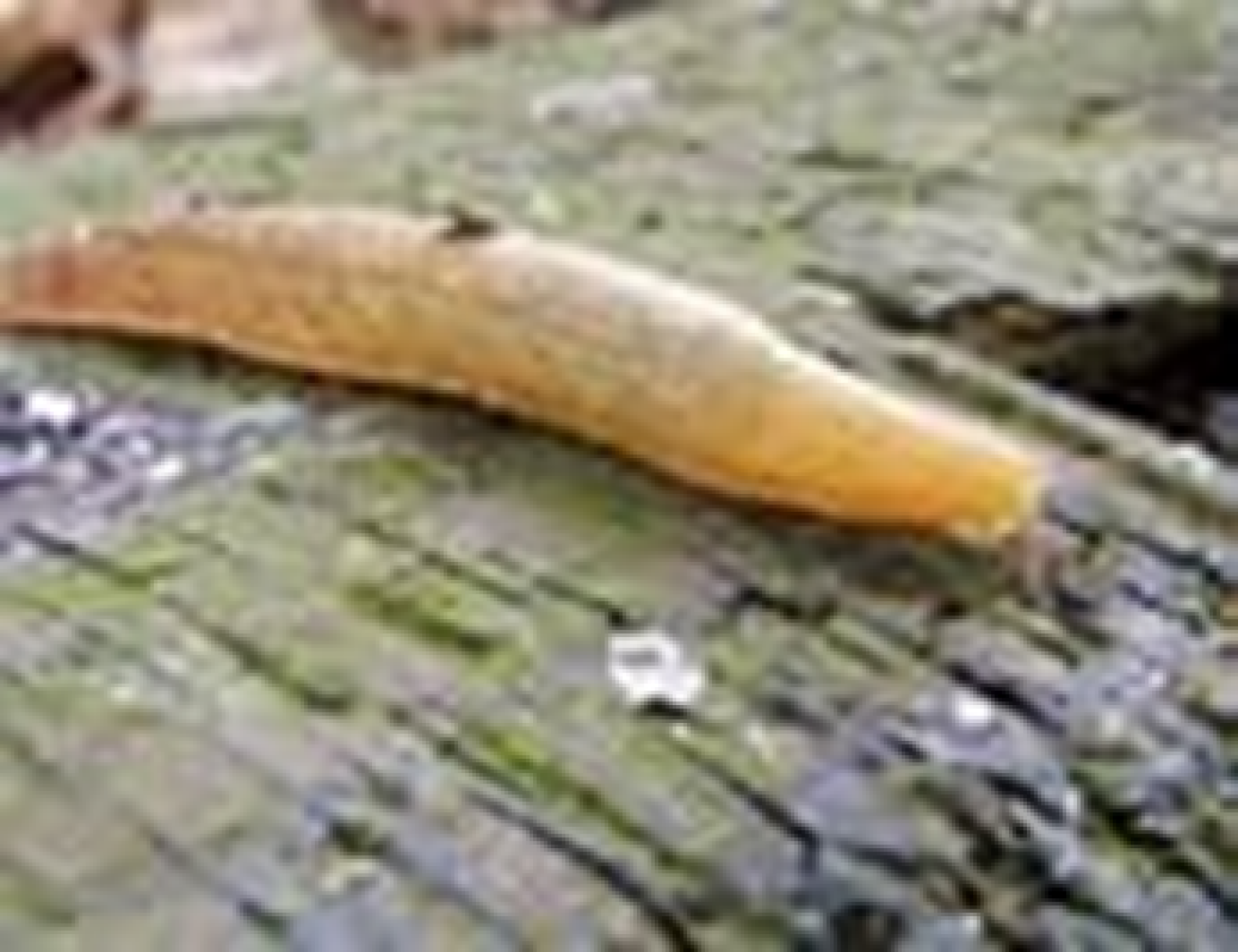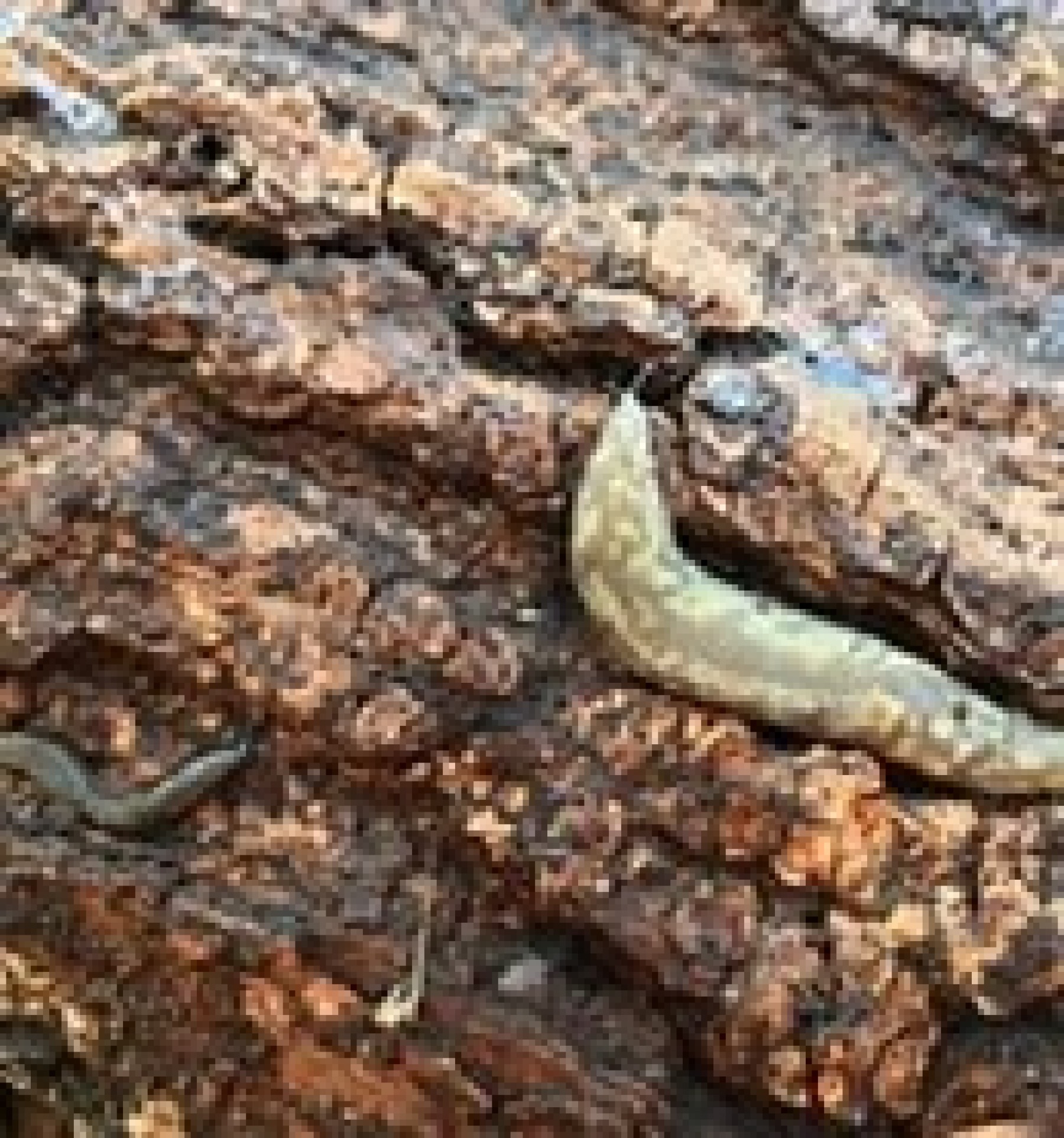Slugs and snails always get a bad press and here at the Nursery we hear your frustration! There is nothing more irritating when tenderly cultivated seedlings, are reduced to stumps or large ragged holes appear in the leaves of your hostas, marigolds and dahlias (to name but a few of their favourite plants).
If you are wondering what has attacked your plants, look out for a telltale silvery, slimy trail.
Would you believe us when we say that not all slugs are a gardener’s enemy and some can even become your friend, as different varieties perform different tasks.
CONTROL METHODS
The following article may contain reference to murder, torture and violence. It is not for those of a sensitive or squeamish nature!
From our experience, it is better to use a combination of methods when trying to reduce slug and snail populations:
Pot Hygiene: Rinse pre-used pots carefully in hot soapy water to dislodge any eggs. Snails can regularly be found hiding under the lip of pots. Slugs are more likely to be found on the bottom of the pot, with smaller slugs finding their way inside.
Pot and Plant Placement: Keep your pots off the floor. Slugs can enter through the drainage holes of pots to lay their eggs. ‘Pot feet’ are ideal. Space your plants so that the critters don’t have an overhanging branch creating an easy access bridge to the next plant.
Garden Hygiene: Create places around the garden for slugs/snails to hide – old tiles or upturned pots. You can then gather them up quite easily. Keep other areas spotlessly clean so that they would not choose to hide there.
Beer Traps: “At least they’ll die happy” is a refrain we hear often. Bury a fairly deep saucer so that the lip is level with your soil and cover with something, leaving a hole so that slugs can get in. Grab a tin of the cheapest beer you can find (or the dregs from the night before – if there is such a thing) and place it in the saucer until it is about a third full. You will need to go out regularly to empty the saucer and replenish the beer.
Salt: Not our recommended treatment but one which seems to be popular with customers. Please note that using salt around the garden can affect the pH of your soil and when you pour it onto a slug, the result is a horrible mass of mucus which you will then have to clear up.
Copper Tape: it is best to place two unbroken rings of tape around your pots. The slug/snail will receive what feels to them like an electric shock when they attempt to travel across the copper tape, which should deter them from going any further. For additional security, customers have told us that they wire a 9V battery to the copper tape.
Slug Killers: There are a number of products available on the market but be sure to choose one that doesn’t cause harm to anything that may eat a slug that has been poisoned. These usually come in pellet form and are ingested by the slug/snail which then go off below ground never to be seen again.
Oats: Put a small handful of rolled oats out. When the slugs and snails arrive at their ‘dining table’ you can simply gather them up for disposal. Those that are lucky enough to get away will be full anyway and less likely to go looking for your plants. Please note that, if you want to remove them to another place rather than killing them, you will need to take them quite a way or they will return (ie launching them over into the neighbour's garden may not quite have the desired effect)!
Nematodes: Slug nematodes are microscopic worms that enter the respiratory system of its host (the slug) releasing a bacteria which kills it. They are harmless to other wildlife, pets, children or plants. There are "recipes" on the internet for making your own nematode or you can purchase them from a reputable supplier once environmental conditions are right.
Torch: We find this to be one of the most effective methods: Go out with your torch, just after it has rained, particularly in the evening and gather up any you find. How you then banish them from your garden is your choice!
Mulches: To deter slugs and snails use a mulch that is ‘sharp or rough’; they don’t like the texture on their soft undersides and so will avoid travelling across the mulch. There are a number of things you can use:
- Crushed oyster shells: A cheap but effective way of protecting your plants (sold here at Top Pots).
- Eggshells: You will need to eat rather a lot of eggs! Save the shells and crumble them up on a baking tray. Place in the oven on a very low heat until the shells turn hard and brittle, you can then place them in an unbroken circle around your plants.
- Wool: Sheep’s wool is widely available as a deterrent. It will not harm any creatures but will need replacing regularly (sold here at Top Pots).
Leopard Slugs: A gardener's friend. These slugs eat other slugs. If you want to learn more about these slugs, David Attenborough has produced a wonderful video on YouTube: The Leopard Slug (youtube.com)
Slug pictures
Snails
Snails are just slugs with homes on their backs. Otherwise their habits are the same and snails will take every opportunity to try every tempting morsel in your garden. Easier to pick up than slugs but the babies and adults can cause considerable damage in the vegetable patch, greenhouse and garden.
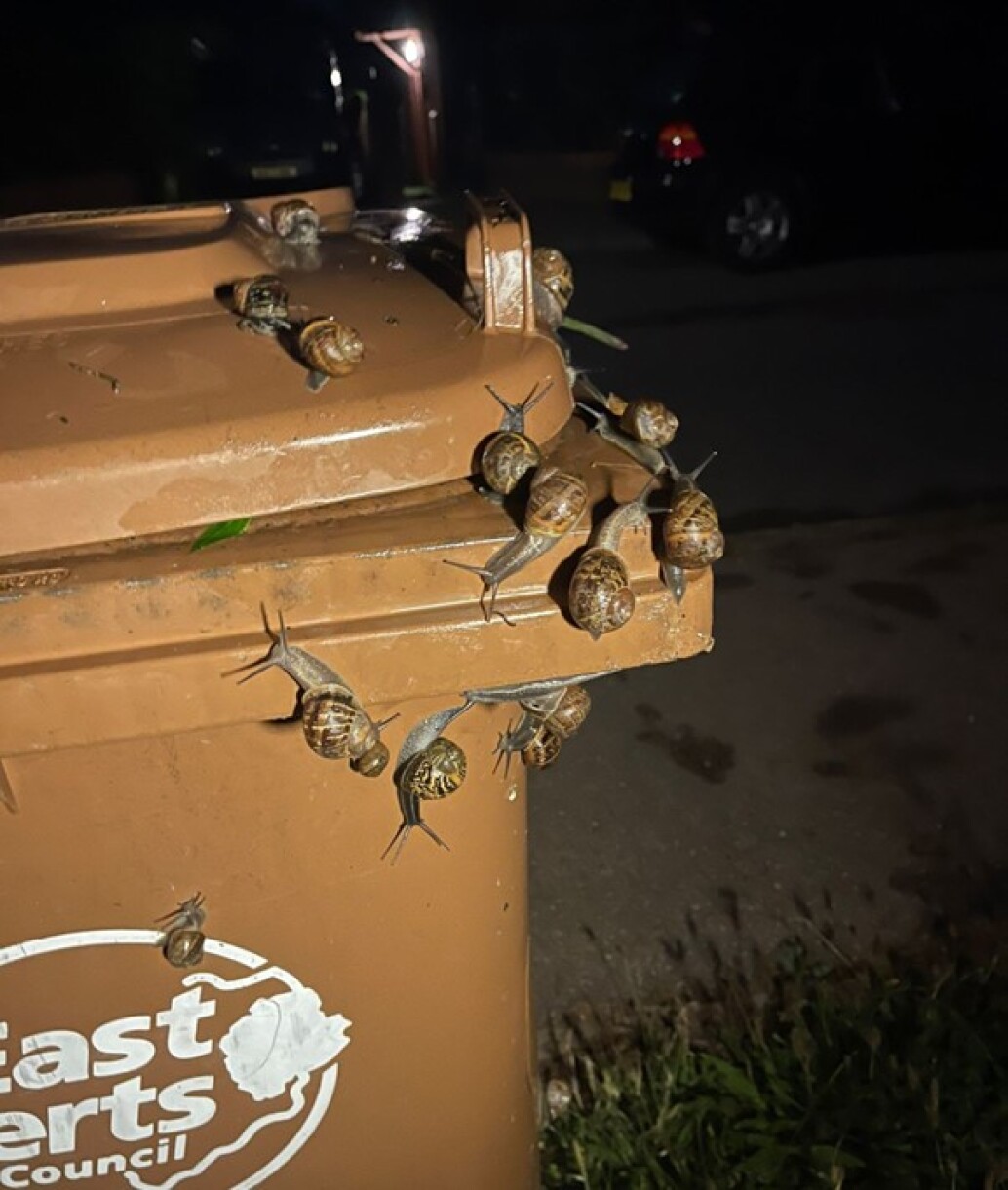
CONTROL METHODS FOR SNAILS
One of our staff members was really pleased with her haul of 127 snails, one damp evening, depositing them in the garden waste bin. Some two hours later she received a photograph from her neighbour ....moral of the story - they can get themselves into and out of some pretty tight spaces!! (We did laugh though).

